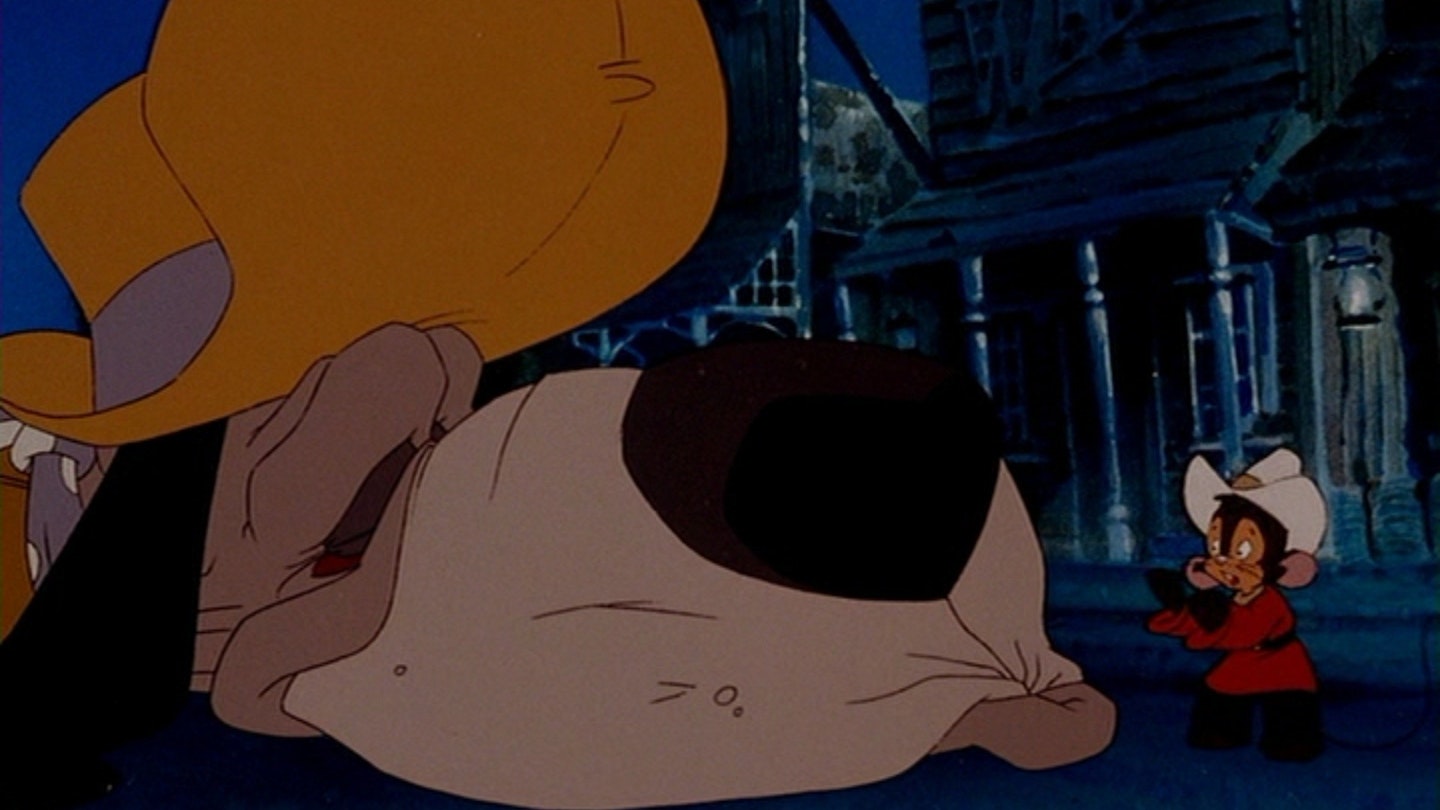The original American Tail, a fairly dull, lacklustre affair, now spawns a fairly dull and lacklustre sequel, albeit an inevitable one after the 1986 original became the highest-grossing animated feature of all time before The Little Mermaid rewrote the record books.
Two years on, the Russian Mousekewitz family are languishing in a poverty-ridden mouse tenement, struggling for that next bit of Swiss and dreaming of a better life. For adventurous tyke Fievel, this means heading to the American West and enforcing the law with his hero, rough, tough and gruff lawdog Wylie Burp, voiced by a very fragile-sounding James Stewart. And Fievel finally gets his wish when Cat R. Waul (one of the least dastardly animated villains ever, even with the slithering vocal talents of John Cleese) and his thuggish gang of tomcats flush the mice from their abodes.
What should be a rollicking Wild West adventure instead derails into a major snoozefest for kids and adults alike as Fievel plods through his adventures in fairly predictable style, despite some fantastic chase sequences. Characters who might retain your, and your youngsters' fading interest - Chula the spider, voiced with appropriate menace by Jon Lovitz, and even Fievel's wimpy pal Tiger - are practically relegated to cameos.
